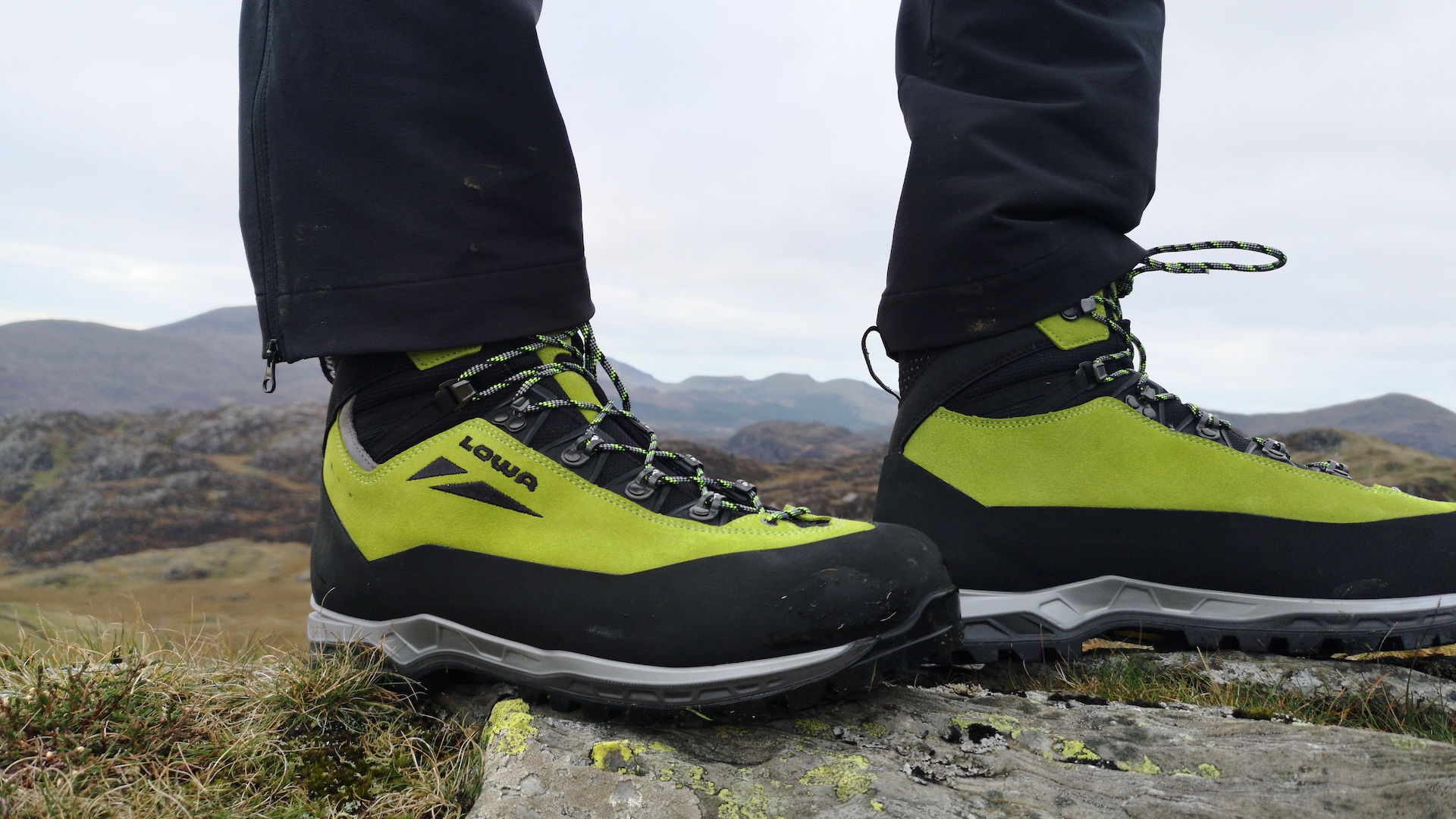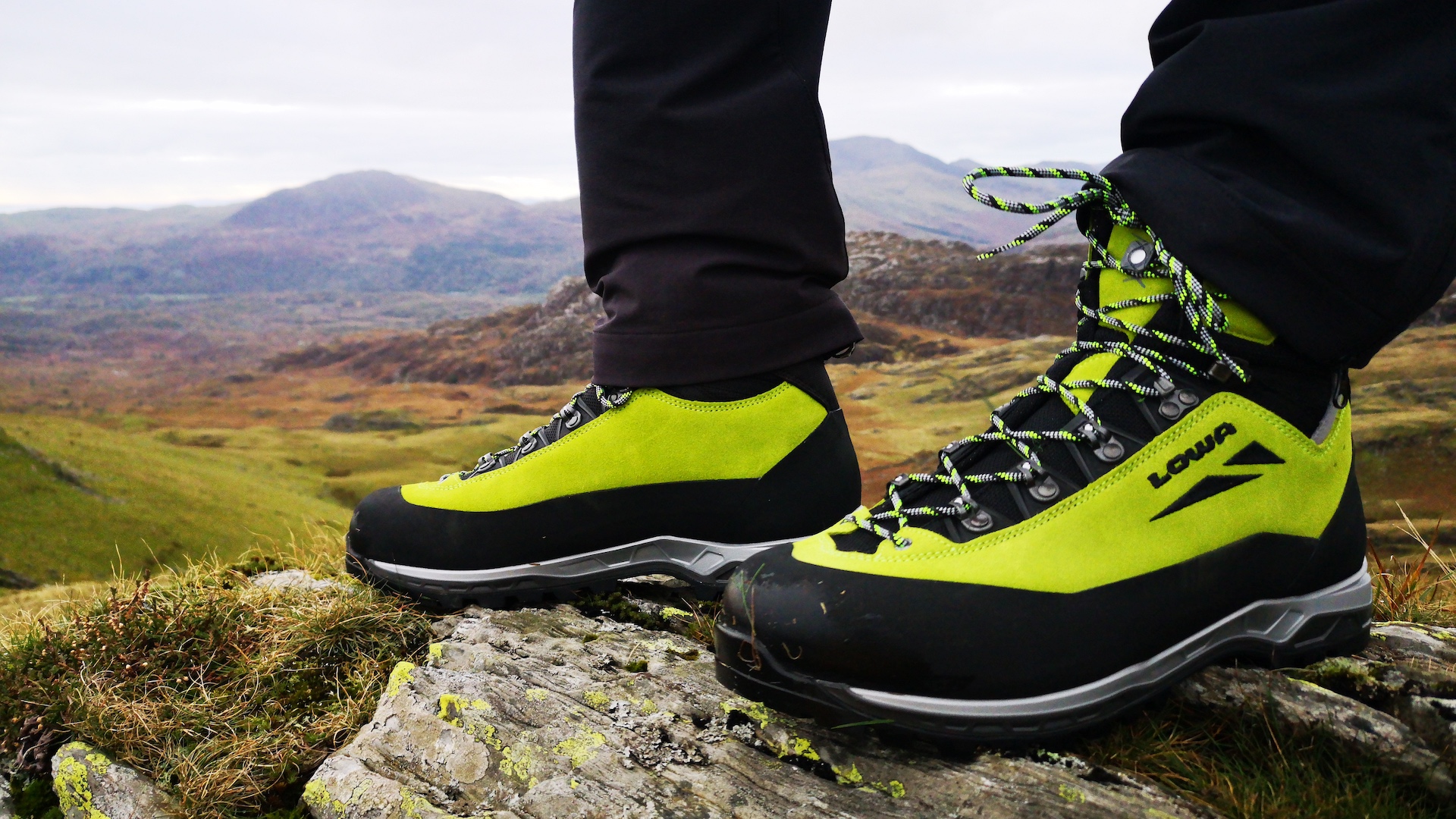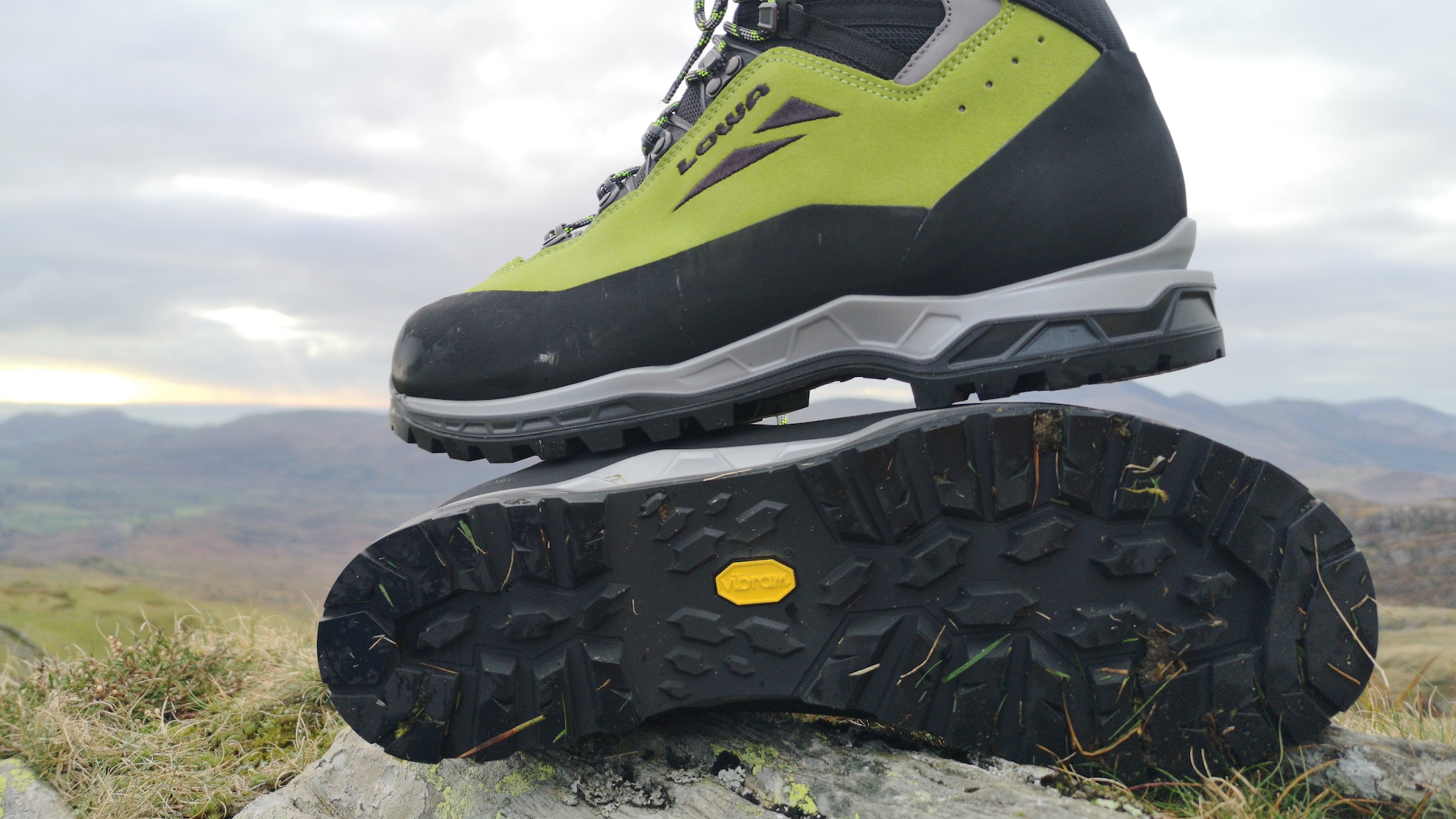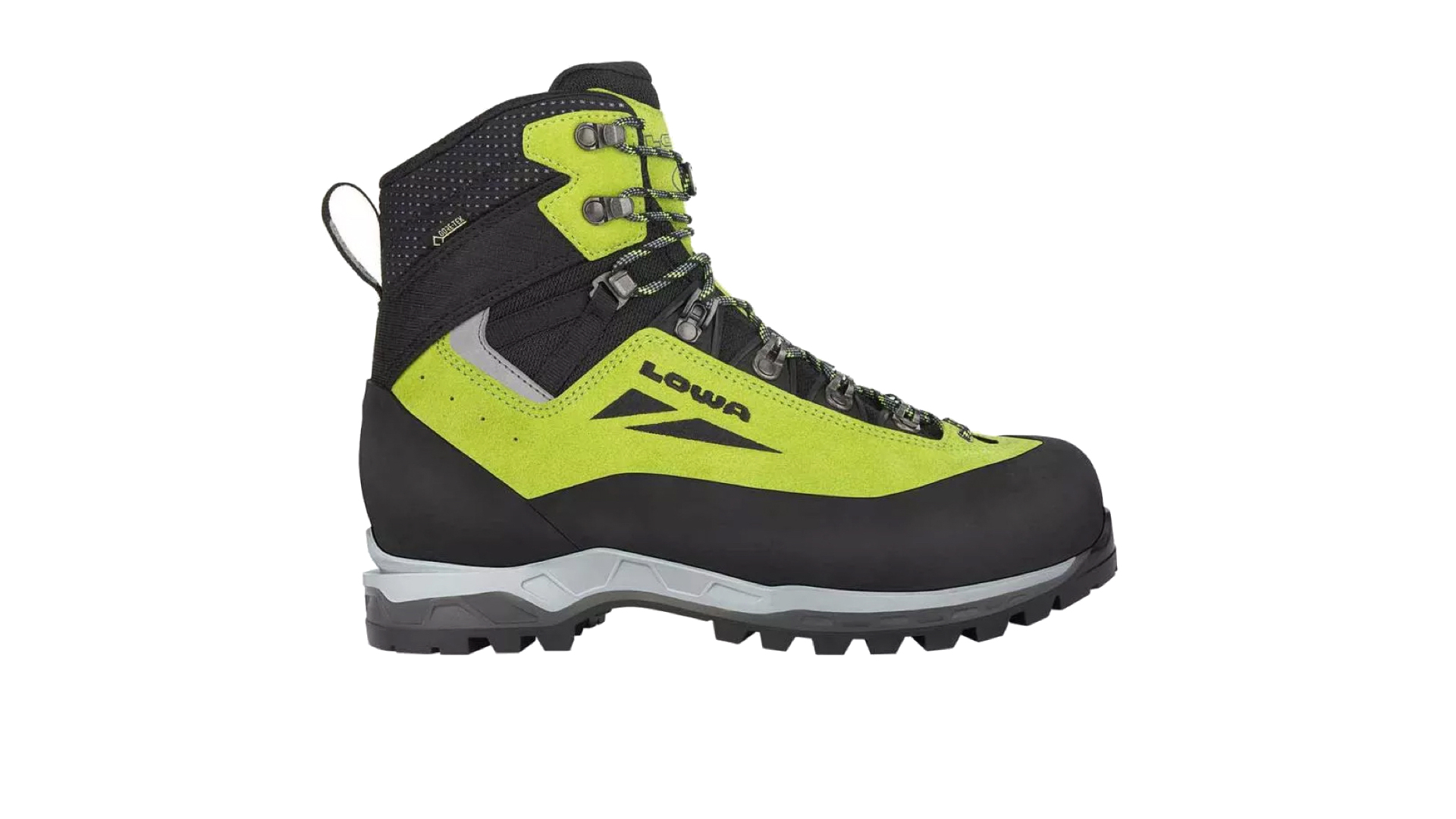Advnture Verdict
The word “workhorse” was pretty much invented for products like the Lowa Cevedale Evo. It sums up these boots perfectly. They are robust, protective and supportive – ideal for mountain trekking and winter hillwalking.
Pros
- +
Robust
- +
Supportive
- +
Protective
- +
Warm
Cons
- -
A little heavy
- -
Not the best cushioning
- -
Not the most refined fit
You can trust Advnture
Lowa Cevedale Evo GTX: first impressions
The Lowa Cevedale Evo GTX is the German brand’s most enduring and popular mountaineering boot. We can see why it seems to have such long-lasting appeal: it feels extraordinarily solid and sturdy.
The uppers are made from chunky suede leather, with a high wraparound rand and they are backed with a Gore-Tex liner for reliable waterproofing. This belt-and-braces construction also means that although they are not insulated, these boots are still warm enough for winter conditions.
But how did they perform when we tested them on the trails for our best winter hiking boots buying guide? Read on…
• RRP: $360 (US) / £285 (UK) / €335 (EU)
• Sizes available: (EU) 38-47, (UK) 5-12
• Materials: Suede and fabric uppers with wraparound rand, Gore-Tex membrane, Vibram Scalatore Evo outsole
• Weight (per boot): 825g / 1lb 13oz
• Colors: Lime
• Compatibility: Four season, B1-B2
Lowa Cevedale Evo GTX: on the trails

In a lot of ways, the owa Cevedale Evo GTX feels like a traditional hiking boot – and that’s no bad thing. On rugged or uneven ground, it is reassuringly sturdy, and what you might lose in terms of “feel” or precision when it comes to footwork, you gain in overall protection and support.
We tested these boots in Snowdonia’s famously rocky and rugged Glyderau – a range of peaks known for their lunar, rock-strewn summits and jagged outcrops. In such terrain these boots come into their own. They offer superb protection and excellent support, even on ankle-jarring, uneven ground.
While not the lightest, it’s hard to find much to fault with these boots. That applies in winter conditions too, which means they are an excellent all-round, all-season option for hard hiking and hillwalking, tough treks and the odd cold-weather mountain mission.
Here’s how they performed in each of the key metrics by which we gauge a hiking boot’s performance (find more on these in how to choose a pair of hiking boots):

Comfort
This is a big, burly boot with a high cut. As such, you get plenty of padding around the ankle cuff for enhanced comfort, though there is a slight rear cutaway that helps to reduce pressure on the Achilles.
If we were being critical, we could point to the thinner sole unit, which isn’t the most forgiving underfoot. This is a common problem with stiff B2 boots, though, and one that is usually easily solved with the addition of an aftermarket insole.
Fit
German-made boots have a reputation for being wider than most and fairly accommodating, ideal for those with broad or high-volume feet. But we’d describe these particular boots as being medium volume overall, with a slim midfoot and a fairly narrow toe box (at least compared to others in this test). We thought they seemed to be sized a little smaller than other boots on test too.
We also noted that the heel didn’t seem to cup the foot as well as some other boots, but fortunately the excellent dual-zone lacing system is so easy to adjust that it is possible to dial in a precise fit, with no heel slip.
Negatives were minor, but it could be argued that the flat-lasted construction means that the fit is not quite as refined as the more precise, anatomically sculpted lasting of some other boots. (See also: How should hiking boots fit?)
Performance
These boots are very capable across a range of different terrain, though we wouldn’t describe them as a full-on mountaineering boot – rather, we’d say they sit somewhere between that and a heavy hiking boot. The reason for that is that the sole unit has a slight rocker and that nylon shank has enough spring to accommodate a natural walking action.
Of course, the midsole is still stiff enough to perform competently on snow and ice, with a heel welt for a C2 crampon and a full-length nylon shank. A rigid toe box also means you can happily kick steps in steep snow. The Vibram sole offers good traction on varied surfaces, although there is also a front contact zone for scrambling on rock.
Weight-wise, these lie towards the heavier end of the spectrum, but they are still good boots for big miles in wet and snowy mountain terrain.

Protection
These boots offer the highest levels of protection for general hillwalking in all seasons, with enough warmth for winter weather too. The burly uppers keep feet safely protected from rocks, debris and impacts, whether you’re sliding down scree slopes or kicking steps in hard-packed snow. The luxuriously padded ankle cuff gives plenty of cushioning, and the Gore-Tex lining ensures reliable waterproof performance.
Durability
These are among the toughest B1 and B2 boots we tested, thanks to their extremely robust and rugged construction. A thick all-around rand incorporating a burly toecap and a beefy heel counter ensure superb durability. The uppers have relatively few panels too, meaning little in the way of extraneous stitching.
An outdoors writer and editor, Matt Jones has been testing kit in the field for nearly a decade. Having worked for both the Ramblers and the Scouts, he knows one or two things about walking and camping, and loves all things adventure, particularly long-distance backpacking, wild camping and climbing mountains – especially in Wales. He’s based in Snowdonia and last year thru-hiked the Cambrian Way, which runs for 298 miles from Cardiff to Conwy, with a total ascent of 73,700 feet – that’s nearly 2½ times the height of Everest. Follow Matt on Instagram and Twitter.


